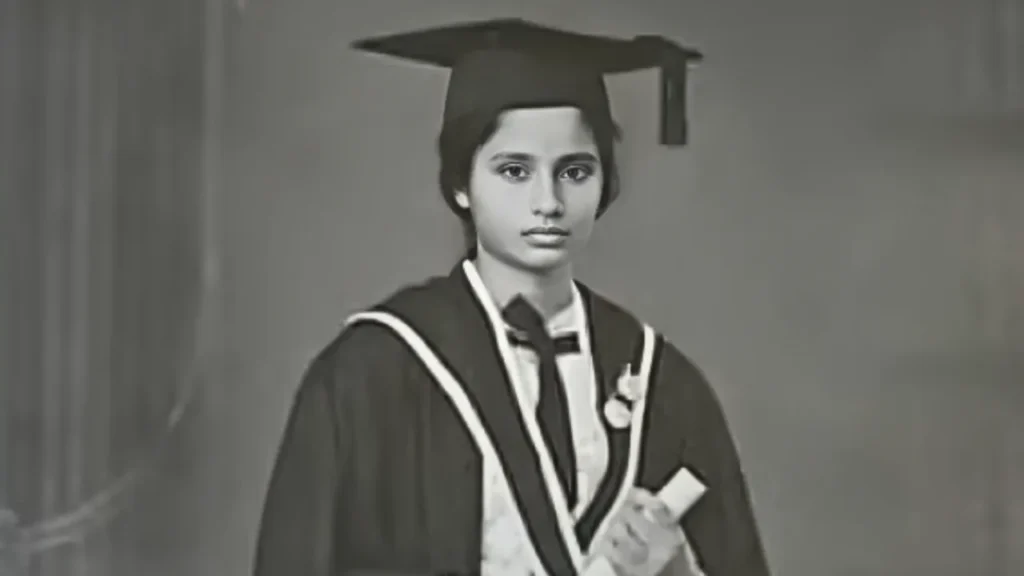Proof That It’s Never Too Late to Chase Your Dreams

In 1965, when J. Robert Oppenheimer—the father of the atomic bomb—personally invited a young Indian woman to join the prestigious Institute for Advanced Study at Princeton, it marked a historic moment. That woman was Thayyoor K Radha, one of the first women of colour ever admitted to this elite institution where Einstein once worked. Yet for decades, her groundbreaking contributions to physics remained virtually unknown.
Breaking Barriers from the Start
Born in Kerala during British India, Radha defied every expectation of her time. While most girls weren’t educated beyond high school, she became the exception among her sisters, pursuing physics at Presidency College in Madras—the only institution that would admit her. Despite having the highest marks in mathematics, she chose the more challenging path of physics, earning a gold medal for her exceptional work.
Thayyoor K. Radha: Pioneering Particle Physics in India
In the 1950s, particle physics didn’t exist in India. When Radha met physicist Alladi Ramakrishnan, who was inspired to bring this cutting-edge field to his homeland after his own stint at Princeton, she became part of history. Along with three other young women, Radha spent months studying particle physics papers obtained through connections to Homi J. Bhabha, India’s nuclear program founder.
As she later recalled: “There were three other girls at that time. We all knew of each other and were waiting for one another to join.” Together, they formed India’s first particle physics research group—a remarkable achievement in a field dominated by men, particularly in 1950s.
International Recognition
By the early 1960s, Radha had established herself as a formidable physicist:
- 14 published papers on particle physics, Feynman propagators, and particle interactions
- Post-doctoral fellowship at Stanford University under renowned physicist Leonard I. Schiff
- Co-authored groundbreaking research on neutron-deuteron capture, presented at international conferences
- Invited lectures across the United States, including at UCLA
- Featured in international media with The Straits Times noting she was “too busy to think of marriage”
At the Institute for Advanced Study
During her fellowship at Princeton (1965-66), Radha worked alongside scientific legends including Freeman Dyson, string theory pioneer Sergio Piero Fubini, and Oppenheimer himself. She was part of an intellectual ecosystem that had nurtured Einstein and was shaping the future of theoretical physics.
The Great Disappearance
Then, seemingly overnight, T.K. Radha vanished from the scientific record. In 1966, she married Professor Vembu Gourishankar and moved to Canada, changing her name to Radha Gourishankar. Though the University of Alberta offered her an assistant professorship, pregnancy and the lack of adequate childcare forced her to step away from active research—a common fate for brilliant women of her generation.
Reinvention and Resilience
But Radha’s story didn’t end there. In 1973, she enrolled in computing courses at the University of Alberta, once again excelling at the top of her class. The physics department immediately hired her as a programmer for numerical analysis—a role that perfectly combined her physics expertise with new computing skills.
For 16 years (1976-1992), she worked as a scientific programmer, helping physicists with complex computational problems. More than just technical support, she often contributed original ideas to research projects, earning co-authorship on numerous publications. She had found a new way to remain connected to the physics she loved.
Rediscovered Legacy
T.K. Radha’s extraordinary story was nearly lost to history until 2023, when archivist Caitlin Rizzo began researching the Institute for Advanced Study’s overlooked histories. Through painstaking detective work, Rizzo uncovered Radha’s achievements and tracked her down for interviews in 2024, finally bringing this remarkable woman’s contributions to light.
Why She Matters
T.K. Radha’s story represents thousands of brilliant women whose contributions were obscured by the social constraints of their time. She was:
- A trailblazer who helped establish an entire field of physics in India
- A barrier-breaker who succeeded in spaces where women, especially women of color, were unwelcome
- A survivor who adapted and found new ways to contribute when traditional paths closed
- A reminder that behind every scientific advancement are often unsung heroes whose stories deserve telling
Her legacy challenges us to ask: How many other T.K. Radhas are there, whose brilliance has been forgotten simply because they navigated their careers differently than men, or because institutional records failed to capture their full stories?
Her Words
“We all knew of each other and were waiting for one another to join.”
This simple statement captures something profound about women in science—the quiet networks of support, the shared understanding of being pioneers in hostile territory, and the knowledge that breaking barriers is rarely a solitary endeavor.
T.K. Radha’s story is one of triumph, not tragedy. She didn’t just break barriers—she found ways to keep contributing to science across decades, adapting to circumstances while never abandoning her passion for physics. In a world that tried to erase her contributions, she persisted, evolved, and ultimately ensured her legacy would inspire future generations of women in STEM.
Today, as we celebrate women in science, let’s remember that recognition often comes long after the work is done. The T.K. Radhas of the world deserve our attention not just for what they achieved, but for showing us that there are many ways to make a scientific life—and all of them matter.
I am sure Thayyoor K Radha’s story has inspired you to take action. Here are some more doses of inspirations for you. Go check these inspiring stories:
